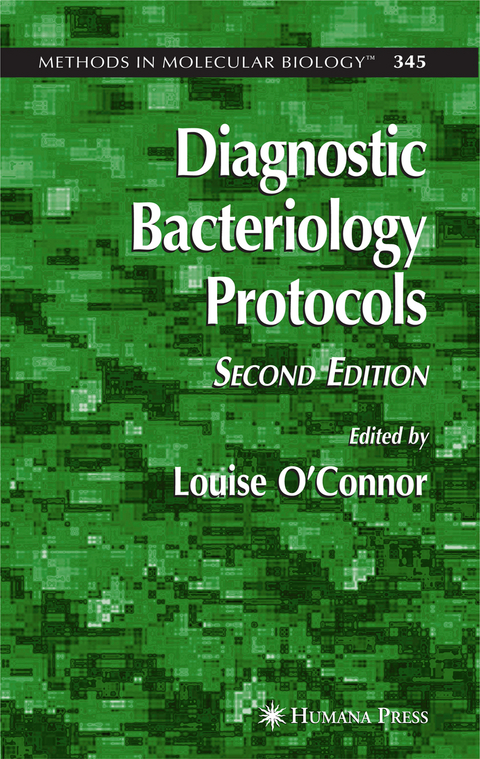
Diagnostic Bacteriology Protocols
Humana Press Inc. (Verlag)
978-1-61737-666-5 (ISBN)
The field of bacterial diagnostics has seen unprecedented advances in recent years. The increased need for accurate detection and identification of bacteria in human, animal, food, and environmental samples has fueled the development of new techniques. The field has seen extensive research aided by the information from bacterial genome sequencing projects. Although traditional methods of bacterial detection and identification remain in use in laboratories around the world, there is now a growing trend toward the use of nucleic ac- based diagnostics and alternative biochemically and immunologically based formats. The ultimate goal of all diagnostic tests is the accurate detection, identification, or typing of microorganisms in samples of interest. Although the resulting information is of obvious use in the areas of patient management, animal health, and quality control, it is also of use in monitoring routes of infection and outlining strategies for infection control. There is, therefore, a need to ensure that the information being provided is of the highest standard and that any new technique is capable of delivering this.
A Review of Current and Future Molecular Diagnostic Tests for Use in the Microbiology Laboratory.- Overview of DNA Purification for Nucleic Acid-Based Diagnostics From Environmental and Clinical Samples.- Microarray-Based Detection of Bacteria by On-Chip PCR.- An Array Biosensor for Detection of Bacterial and Toxic Contaminants of Foods.- Detection of Neisseria meningitidis, Streptococcus pneumoniae, and Haemophilus influenzae in Blood and Cerebrospinal Fluid Using Fluorescence-Based PCR.- Use of Hybridization Probes in a Real-Time PCR Assay on the LightCycler® for the Detection of Methicillin-Resistant Staphylococcus aureus.- Detection of Verotoxin Genes VT 1 and VT 2 in Escherichia coli O157:H7 in Minced Beef Using Immunocapture and Real-Time PCR.- Application of Two-Step Quantitative Reverse-Transcription PCR to Bacterial Diagnostics.- Quencher Extension for Single Nucleotide Polymorphism Quantification in Bacterial Typing and Microbial Community Analyses.- Amplified Fragment-Length Polymorphism and Protein Profiling for Identification of Campylobacter lari Subgroups.- Use of Peptide Nucleic Acid Probes for Rapid Detection and Enumeration of Viable Bacteria in Recreational Waters and Beach Sand.- HOOF Prints.- Detection of Legionella in Various Sample Types Using Whole-Cell Fluorescent In Situ Hybridization.- Identification of Diagnostic Proteins in Mycobacterium avium subspecies paratuberculosis by a Whole Genome Analysis Approach.- Diagnosis of Q Fever Using Indirect Microimmunofluorescence.- Macrophage Cell Cultures for Rapid Isolation of Intracellular Bacteria.
| Erscheint lt. Verlag | 19.11.2010 |
|---|---|
| Reihe/Serie | Methods in Molecular Biology ; 345 |
| Zusatzinfo | 51 Illustrations, black and white; X, 226 p. 51 illus. |
| Verlagsort | Totowa, NJ |
| Sprache | englisch |
| Maße | 152 x 229 mm |
| Themenwelt | Naturwissenschaften ► Biologie ► Mikrobiologie / Immunologie |
| ISBN-10 | 1-61737-666-3 / 1617376663 |
| ISBN-13 | 978-1-61737-666-5 / 9781617376665 |
| Zustand | Neuware |
| Haben Sie eine Frage zum Produkt? |
aus dem Bereich


